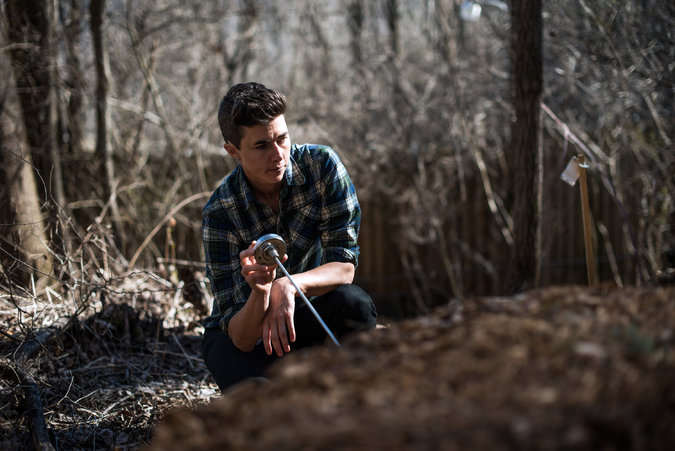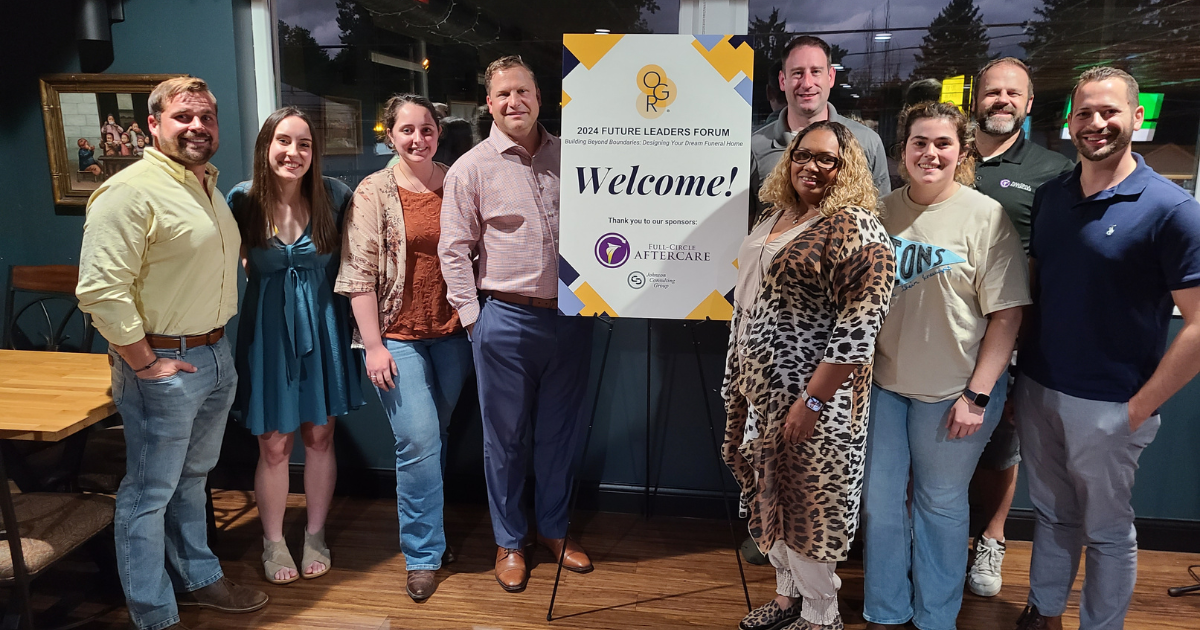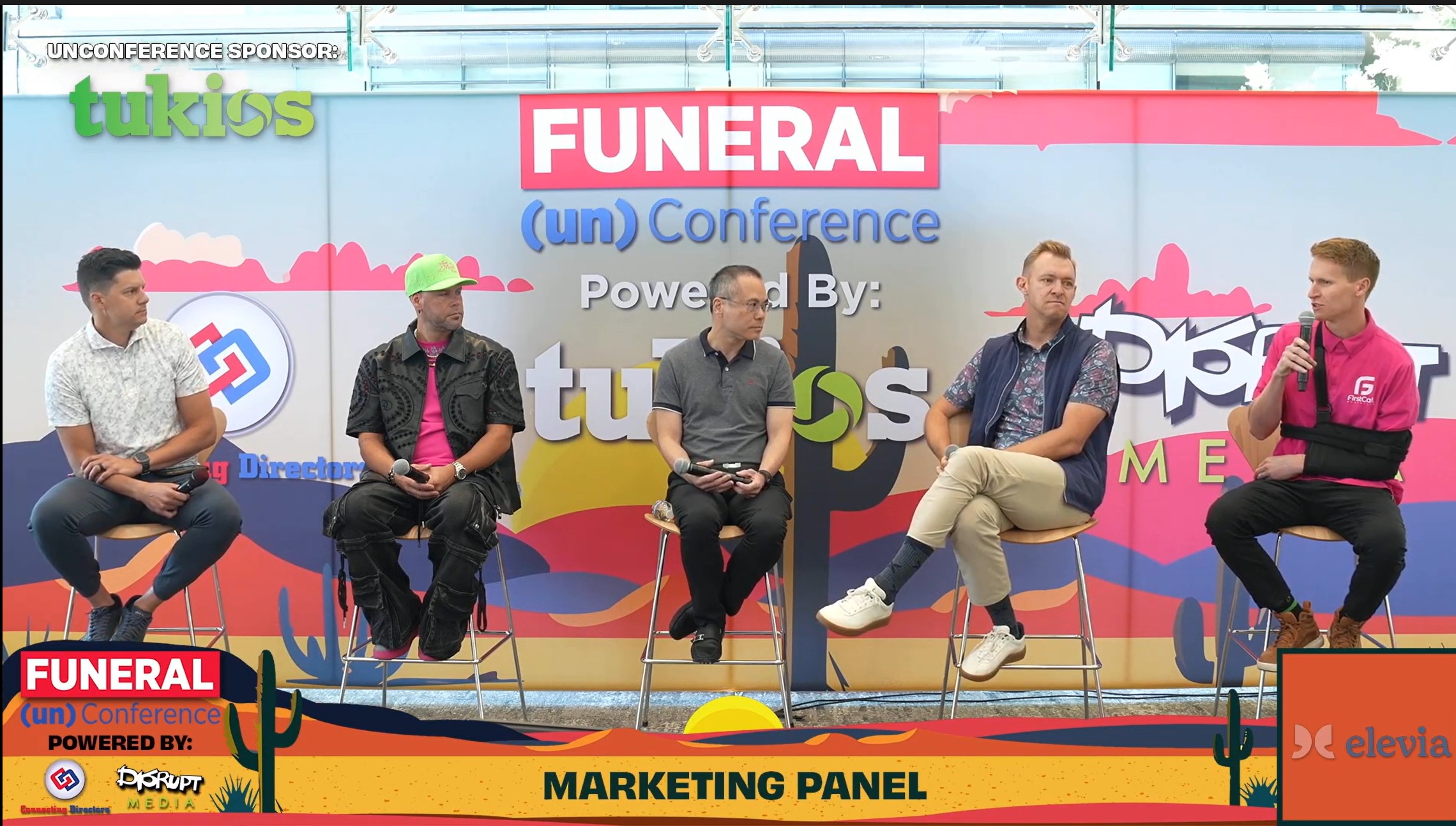A Project to Turn Corpses Into Compost
Cullowhee, N.C. — The body of the tiny 78-year-old woman, gray hair falling over stiffened shoulders, was brought to a hillside at Western Carolina University still clad in a blue hospital gown and chartreuse socks.
She was laid on a bed of wood chips, and then more were heaped atop her. If all goes as hoped, the body will turn into compost.
It is a startling next step in the natural burial movement. Even as more people opt for interment in simple shrouds or biodegradable caskets, urban cemeteries continue to fill up. For the environmentally conscious, cremation is a problematic option, as the process releases greenhouse gases.
Armed with a prestigious environmental fellowship, Katrina Spade, a 37-year-old Seattle resident with a degree in architecture, has proposed an alternative: a facility for human composting.
The idea is attracting interest from environmental advocates and scientists. The woman laid to rest in wood chips is a first step in testing how it would work.
“Composting makes people think of banana peels and coffee grounds,” Ms. Spade said. But “our bodies have nutrients. What if we could grow new life after we’ve died?”

Scientists agree that human beings can be composted. Already countless farms across the country, including at least a third of Washington State’s dairy farms, compost the bodies of dead livestock. In some states,transportation departments compost roadkill.
“I’m absolutely sure that it can work,” said Lynne Carpenter-Boggs, a soil scientist at Washington State University who serves on the advisory board of the Urban Death Project, a nonprofit that Ms. Spade founded.
The process is surprisingly simple: Place nitrogen-rich material, like dead animals, inside a mound of carbon-rich material, like wood chips and sawdust, adding moisture or extra nitrogen and making other adjustments as needed. Microbial activity will start the pile cooking.
Bacteria release enzymes that break down tissue into component parts like amino acids, and eventually, the nitrogen-rich molecules bind with the carbon-rich ones, creating a soil-like substance.
Temperatures reach around 140 degrees, often higher, and the heat kills common pathogens. Done correctly, there should be no smell. Bones also compost, though they take longer than tissue.
Ms. Spade has designed a building for human composting that aims to marry the efficiency of this biological process with the ritual and symbolism that mourners crave. Each Urban Death facility would be centered around a three-story vault that she calls “the core.” Loved ones would carry their deceased, wrapped in a shroud, up a circular ramp to the top.
There, during a “laying in” ceremony, mourners would place the body inside the core, which could hold perhaps 30 corpses at a time. Over the next several weeks, each body would move down the core until the first stage of composting was complete. In a second stage, material would be screened, along with any remaining bones, and the compost would be cured.
Ms. Spade estimates that each body, combined with the necessary materials such as wood chips and sawdust, would yield enough compost to fill a three-foot cube.
Weeks or months later, survivors could collect some of the compost to use as they saw fit, perhaps in their garden or to plant a tree. Ms. Spade foresees the rest going to nearby parks or conservation lands. Each human composting would cost about $2,500, a fraction of the price of conventional burial, Ms. Spade estimates.
She hopes to build the first facility in Seattle, then to develop a template that other communities can use for locally designed facilities. “Like libraries,” she said.
Ms. Spade, who smiles a lot, is the opposite of funereal; she buzzes with energy and sometimes has to remind herself to talk slower. She studied sustainable agriculture before going to architecture school. The composting idea was inspired by the “nurse log,” a fallen tree in a forest that grows new life as it decays.
Beyond the environmental benefits to composting humans, she believes there is a spiritual one: connecting death to the cycle of nature will help people face their own mortality and bring comfort to the bereaved.
Conventional burial is anything but natural. Cadavers are preserved with embalming fluid containing formaldehyde, a carcinogen. They are buried in caskets made of metal or wood, and placed inside a concrete or metal burial vault.
These traditions, though commonplace in the United States, are relatively new, beginning in the Civil War when northern families needed to get their dead men home from the South.
“American ingenuity,” said Gary Laderman, a professor at Emory University who specializes in the history of death in America. “Embalming stuck.”
Death rites can go from repugnant to normal in a surprisingly short time, said James Olson, a funeral director in Wisconsin and chairman of the green burial work group of the National Funeral Directors Association.
Cremation, for instance. “If I had told you 50 years ago that we were going to burn your loved one at 2000 degrees and pulverize their skeleton in a machine and give you back the crushed bone,” he said, “you would have said, ‘Eww.’”
He called Ms. Spade’s concept “wonderful.”
First, though, she and her supporters at the Urban Death Project will have to navigate an array of obstacles. Not least is the yuck factor.
Many Americans find the very idea of composting human bodies repulsive, a contravention of cultural and religious norms. One critic on the Urban Death website commented: “This MUST be a joke. If not, there’s only one word which could possibly describe your activities: SICK.”
Another commenter wrote: “A pile of bodies is usually called a ‘mass grave.’ Please stop what you’re doing.”
Then there are legal barriers. State laws vary: In the last few years, several have legalized alkaline hydrolysis, sometimes known as water cremation, in which bodies are dissolved in a heated mix of water and lye. But in many other states, bodies must be buried, entombed, cremated or donated to science.
Questions remain about how human compost should be used. Certain pathogens, like the prions related to mad cow disease, can survive composting, and livestock that have died from certain diseases are banned from composting.
Some experts recommend that livestock compost not be spread on fields where fruits and vegetables are grown for human consumption.
As with cremation, heavy metal contamination could be a concern; perhaps dental fillings would have to be removed from bodies. “There are many discussions to be had with the medical community and the health department,” Ms. Carpenter-Boggs said.
Ms. Spade, though, is forging ahead.
Recently, she and Cheryl Johnston, a forensic anthropologist at Western Carolina, returned to the university’s hillside research station. Twelve bodies lay decomposing in the open air, practice cadavers for forensic science students learning to analyze remains. Off to one side was the body of the 78-year-old woman, which had been donated by her family and had lain in wood chips for about three weeks.
After raking, scooping and brushing the chips away, they exposed part of the woman’s jaw and chest. The temperature of the mound was a cool 50 degrees.
“Nothing much has happened,” said Ms. Johnston.
Ms. Spade tried not to look glum. “I’m not surprised,” she said. “I mean, I’d be jumping for joy if it was reading 120 degrees.”
On a conference call the next morning, Ms. Carpenter-Boggs, the soil scientist, suggested adding nitrogen-rich material to jump-start composting.
For livestock, manure would be ideal, she said, but that was not appropriate for humans. Instead, she recommended alfalfa hay or pellets.
Ms. Spade beamed. “Who doesn’t want to be laid to rest in alfalfa?” she asked.
[H/T: NY Times]




